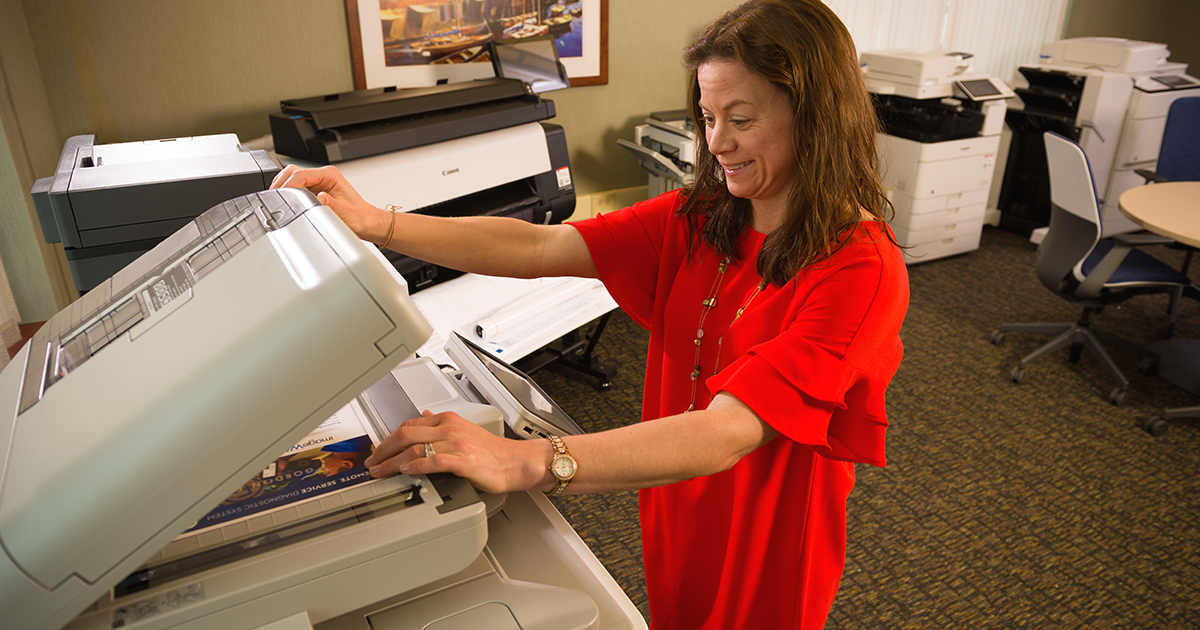ALL businesses rely on technology in some way, small businesses perhaps more than most. Yet, technology on its own means little. What is important is the depth at which small business entrepreneurs and their employees adapt to new technology and systems.
Having teammates connect with each other and to customers has always been important, and it’s been fascinating to watch small business technology evolve over the years, from email and instant messenger to today’s web-based project management programs. In real-time, projects are tracked, documents shared, tasks completed, and customers updated. Regardless of anyone’s location, small businesses can have a central hub that keeps everyone connected.
The impact of COVID-19 cannot be overstated for this discussion. “Pandemic tech” has helped businesses pivot and solve challenges no one expected to face. Things like signing documents digitally, data security, and video conferencing have all helped small businesses shift appropriately.
But what will tomorrow bring, and what trends do you need to master moving into 2022?
Embrace Automation
From 2021 research conducted with small and medium-size businesses, automation continues to enable workers to be more efficient and focus on tasks that only people can do. In fact, 65% of workers say automation helps them be more productive, and they feel less stressed at work.
Another huge revelation from the survey: 88% of small businesses report that automation enables their companies to compete with bigger businesses. From transitions in online offerings to automating curbside pickup to processing new leads, automation software increases productivity.
Many small businesses are already using automation to drive worker productivity and happiness, and that trend will continue throughout the next year.
Get Comfortable with eSignatures
Similar to how workflow automation tools increased during the pandemic, use of electronic signature technology grew by 50% since the emergence of COVID-19. No surprise, right?
eSignatures are an affordable way for small businesses to safely and securely handle critical business documents such as sales contracts and personnel offer letters. Legally binding with bank-level encryption, eSignatures on small business agreement workflows are signed about 80% faster than paper contracts, according to HelloSign.
Small business owners should analyze software alternatives to find the option that fits best with their use cases, with many integrating easily with other cloud computing technologies (HubSpot, Google Suite, Slack, Dropbox).
As we eventually move into a post-pandemic world, 69% of businesses will continue to use eSignatures over in-person signing, so consider your eSignature selection as part of your overall digital transformation strategy, not just a temporary change.
Explore Smart Security
Cybersecurity was a real threat well before the pandemic hit, yet few small businesses saw information security as a high priority. Now, however, things are different, with the FBI’s Internet Crime Complaint Center reporting a 300% jump in cybercrime since the beginning of COVID-19.
Data breaches are not new, and they’re not stopping, either. Even Zoom data breaches (see Video Software section below) have resulted in millions of accounts being shared freely or sold online. Although large security breakdowns grab the headlines, 28% of data breaches in 2020 involved small businesses, according to Semrush.
With more and more work being done outside the office, small businesses need to be more proactive when it comes to digital security. That’s why they’re allocating bigger chunks of their budgets for software and tech, specifically data and information security; 47% of small businesses say that’s now a budget priority, according to Capterra.
As organizations work to keep their data secure, the cybersecurity industry continues to show its innovation, particularly by enhancing intelligent security technology that even mitigates insider breaches, not just outside attacks.
Maximize Video Software
Again, this shouldn’t be breaking news to small businesses, but it is important to review. Video conferencing software was leaned on as heavily as any “pandemic tech” tool, and with many small businesses continuing with hybrid or full work-from-home options, it’s safe to say that video conferencing is here to stay. In fact, many suppliers, internal team members, and customers likely see video as an essential way to maintain quality relationships.
Instant, on-demand communication is expected of today’s small businesses, so a simple, consolidated, unified video conferencing solution (with a centrally managed user interface) should:
- Make screen sharing easy
- Allow for real-time instant messaging and live chat
- Have reliable meeting recording available
- Provide event live streaming
- Empower people to be engaged
KISS
The classic principle/acronym — KISS (keep it simple stupid) — celebrates how simplicity should be a design goal, while avoiding unnecessary complexity. Small businesses are living that principle by using fewer apps to run their businesses. That may sound odd after a nearly two-year stretch during which people have had to use more digital technology, both at work and when connecting with loved ones.
“Fewer apps” doesn’t mean a drop in the use of digital tools, it means better-integrated products and services. For instance, more than half of all small businesses are using CRMs as centralized systems for customer interaction, sales, service, and marketing … all within the same app.
Small businesses that have recently experienced how efficient and convenient integrated services can be will surely continue their use moving forward.
Join the 3 Billion Mobile 5G Subscriptions (by 2025)
Statista estimates that 5G will be the new global wireless standard. Why? Because of its lightning-fast data transfer speeds, user experience, and network reliability. 5G can help small business by allowing:
- Use of AR, VR, and 3D
- Instant video, audio, and image streaming
- Increased website and app speed
- Collection of hyper-local, detailed data and analytics
- Customer connections in real-time
- Personalized customer experiences
Printing Options
Printing is essential for any small business. With more employees working remotely, it’s increasingly difficult to manage print output with reliable, robust functionality and security. Two tech trends in printing are especially useful moving into 2022.
Cloud printing services, or cloud print management, routes printing jobs from any web-connected device to an internet-connected printer, eliminating the need for printer drivers. Traditional printing requires direct connections between devices and uses expensive on-premise printing infrastructure, print servers and cables.
Now more than ever, modern small businesses need short run jobs (one-off prototypes and samples) printed quickly. Digital printing won’t replace offset printing, but it is incredibly valuable because of its:
- Fast turnaround times — Quick set-up and calibration allows a digital press to cost-effectively meet tight timelines.
- Use of variable data — Small businesses appreciate being able to personalize each piece (names, mailing addresses, targeted messages, etc.)
- New inkjet printing processes — Matte, silk, glossy finishes … digital presses and software-managed color management deliver high quality.
- Environmental friendliness — Only the exact amounts of ink and toner are used, and no harmful chemicals are needed for clean up.
According to Semrush, 80% of small businesses are not taking full advantage of available technology. Odds are, however, that your competition is gearing up for more technology use in 2022. Implement at least some of these business development technology trends and stay ahead of the curve!
To talk about how your small business can benefit from flexible and cutting-edge printing services or ask questions about print-related issues, reach out to Gordon Flesch Company.










